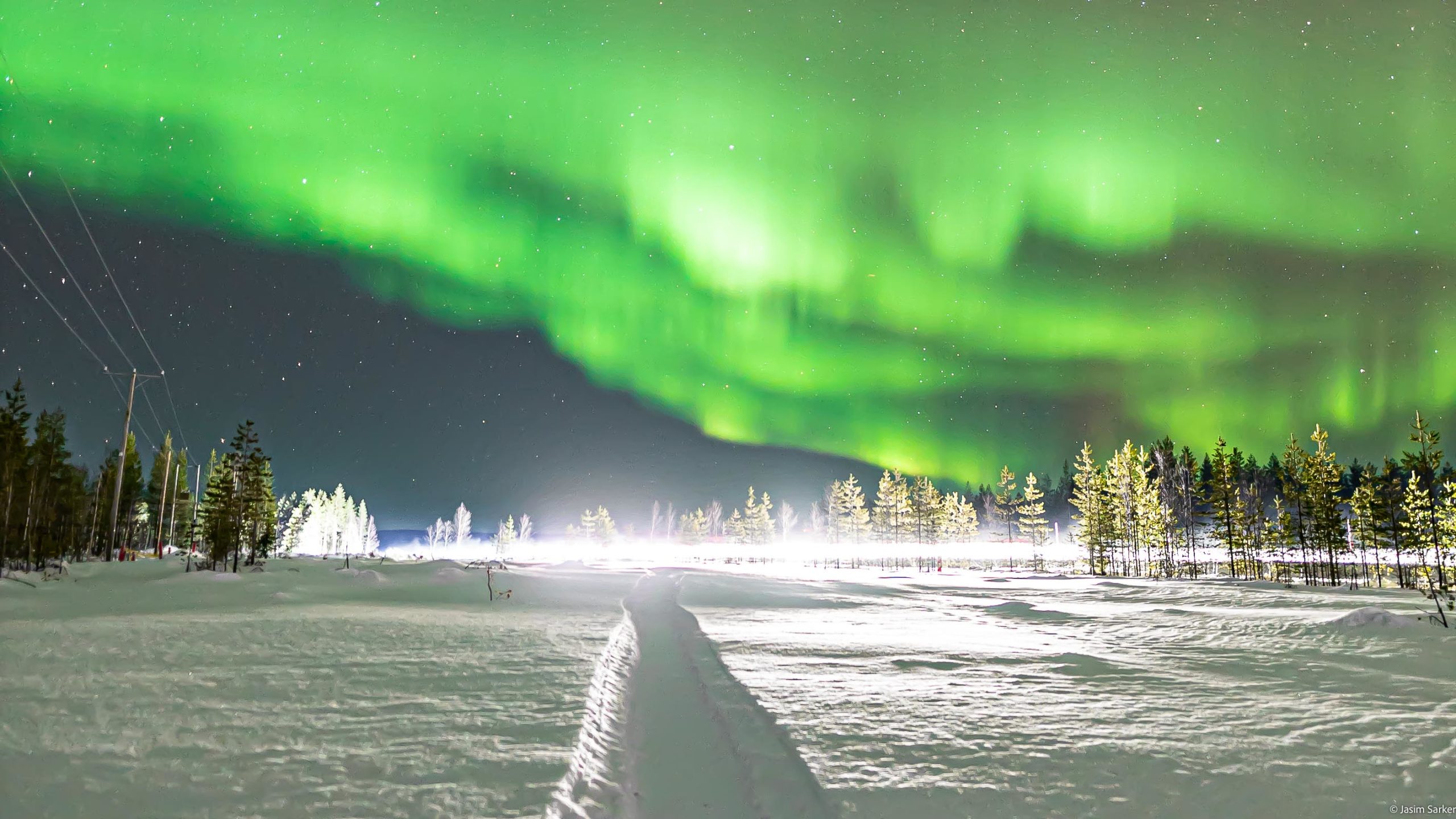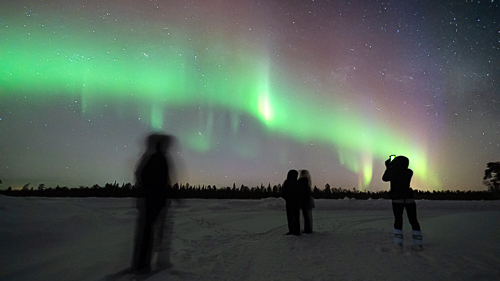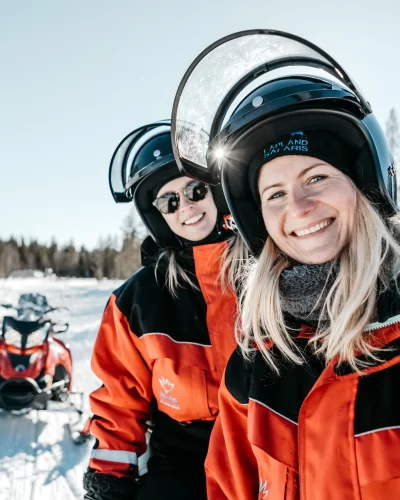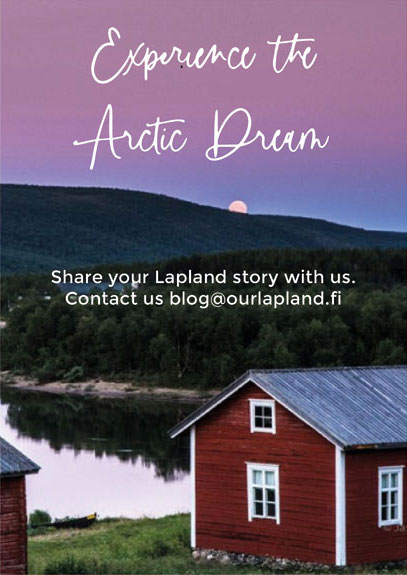The aurora borealis
Aurora borealis, also known as the Northern Lights, is a natural light display that occurs in the polar regions. It is caused by the interaction of charged particles from the sun with the Earth’s magnetic field and atmosphere. When these charged particles, also known as solar wind, reach the Earth’s atmosphere, they collide with gas molecules, such as nitrogen and oxygen, and cause them to emit light.

The aurora borealis appears as a colorful and dynamic display of lights in the sky, with colors ranging from green, pink, and purple to red, blue, and yellow. It typically occurs in the high-latitude regions, such as Norway, Sweden, Finland, Iceland, Canada, and Alaska, during the winter months. The intensity and frequency of the aurora borealis are influenced by solar activity, with the most intense displays occurring during periods of high solar activity.
When you can see the aurora
The aurora can be seen during the winter months in the polar regions, typically between September and April. The best time to see the aurora borealis is during the dark hours of the night, between 10 pm and 2 am, when the sky is clear and free of clouds. It’s also important to be away from sources of light pollution, such as cities and towns, in order to have the best viewing experience. The intensity and frequency of the aurora are influenced by solar activity, with the most intense displays occurring during periods of high solar activity. Therefore, it’s important to keep an eye on the solar activity forecasts to increase your chances of seeing the aurora.
The kp index in aurora forecast
The Kp index is a measure of geomagnetic activity used to predict the likelihood of auroral activity at high latitudes. It is a scale from 0 to 9, with 0 being very little geomagnetic activity and 9 being a major geomagnetic storm.
The Kp index is based on data from magnetometers located around the world, which measure the strength of the Earth’s magnetic field. When there is a disturbance in the magnetic field, such as a coronal mass ejection from the sun, the Kp index will increase. A higher Kp index means that there is a greater chance of auroral activity occurring at lower latitudes, which means that people living in areas farther away from the poles may also have a chance to see the aurora.
Generally, a Kp index of 5 or higher is needed for the aurora to be visible at lower latitudes, while a Kp index of 7 or higher is needed for the aurora to be visible in mid-latitudes. However, this is just a general guideline, and other factors such as cloud cover, light pollution, and local weather conditions can also affect visibility.
Aurora Destinations- The best places
The best places to see the aurora borealis are typically in high-latitude regions close to the magnetic poles. Some of the top destinations to see the aurora include: Northern Norway, Finnish Lapland, Iceland, the Canadian Arctic, including places like Yellowknife and Whitehorse, The northern regions of Alaska, including Fairbanks and Anchorage offers some excellent opportunities to see the aurora borealis.
Finnish Lapland is a great place to see the aurora, especially in the cities of Utsjoki, Kilpisjärvi, Rovaniemi, Levi, Inari, Muonio, and Saariselka. It’s important to keep in mind that the aurora is a natural phenomenon and can be unpredictable, so there is no guarantee that you will see it, even if you go to one of these destinations. It’s also important to choose a location that has minimal light pollution and a clear view of the sky to increase your chances of seeing the aurora.
Aurora destinations in Finnish Lapland
Lapland is a great place to see the aurora borealis, as it is located at a high latitude close to the magnetic pole. Finnish Lapland, in particular, is known for its excellent aurora viewing opportunities.
Some of the best places in Finnish Lapland to see the aurora include:
- Rovaniemi: The capital of Lapland is a great base for aurora viewing, with plenty of tour operators offering aurora excursions.
- Levi: This ski resort town in Lapland offers excellent opportunities for aurora viewing, with clear skies and minimal light pollution.
- Saariselka: This small village in Lapland is a popular destination for aurora seekers, with its clear skies and northern location.
- Inari: This town located on the shores of Lake Inari is a great place to see the aurora, especially in the winter months.
- Kilpisjarvi: This small village located in the far northwestern corner of Finland offers some of the best views of the aurora in the country.
- Utsjoki: The northernmost city of Finland and European Union is a great place to experience the magical lights.
Remember to check the weather forecast and Kp index before planning your trip to Lapland for aurora viewing. You can also join an aurora tour, which provides a guide and transportation to some of the best viewing locations in the region.
How to Photograph northern lights
Photographing the aurora can be a wonderful way to capture this beautiful natural phenomenon. Here are some tips on how to photograph the aurora:
- Choose a good location: To photograph the aurora, you’ll need to be away from sources of light pollution, such as cities and towns. Choose a location with a clear view of the northern horizon and minimal light pollution.
- Use a tripod: To avoid camera shake, use a sturdy tripod to keep your camera steady during the long exposures required for aurora photography.
- Use a wide-angle lens: A wide-angle lens will allow you to capture a larger portion of the sky and increase your chances of capturing the aurora.
- Use a high ISO: To capture the faint light of the aurora, you’ll need to use a high ISO, such as ISO 800 or higher.
- Use a long exposure: A long exposure, typically between 10 and 30 seconds, will allow you to capture the movement and colors of the aurora.
- Experiment with different settings: The settings you use will depend on the conditions and the effect you’re looking for. Try experimenting with different settings, such as aperture, shutter speed, and ISO, to find the best combination for the conditions.
- Be patient: The aurora can be unpredictable, so be patient and prepared to wait for the right moment.
Remember to dress warmly and bring extra batteries and memory cards, as aurora photography can be time-consuming and use up a lot of battery power. With a little patience and practice, you can capture some stunning photos of the aurora.
The Colors of aurora is always Green!
No, the aurora is not always green. While green is the most common color of the aurora, it can also appear in other colors, such as pink, purple, blue, and red.
The color of the aurora depends on the type of gas particles that are colliding with the charged particles from the sun. When charged particles collide with oxygen in the Earth’s atmosphere, they can produce a green or yellowish-green aurora. When they collide with nitrogen, they can produce a blue or purple aurora. The exact colors that appear can also depend on the altitude at which the collisions occur.
The color and intensity of the aurora can also change over time, depending on the strength of the solar wind and the Earth’s magnetic field. So while green may be the most common color of the aurora, it is not the only color that you may see.
Best aurora apps
There are several apps available that can help you track and predict the aurora borealis, making it easier for you to plan your aurora viewing experience. Here are some of the best aurora apps that you can download:
- Aurora Forecast – This app provides a 3-day aurora forecast based on the Kp index, along with current and forecasted weather conditions. It also includes an aurora map, showing the current and predicted aurora activity.
- My Aurora Forecast & Alerts – This app provides a 7-day aurora forecast, along with an aurora visibility map and real-time aurora alerts.
- Aurora Watch UK – This app provides aurora alerts specifically for the UK, based on data from the British Geological Survey.
- AuroraNow – This app provides real-time aurora alerts based on your location, along with a 3-day aurora forecast and an aurora map.
- Aurora Tracker – This app provides a 7-day aurora forecast, along with a map of current aurora activity and an aurora alert feature.
- Aurora Buddy – This app provides a 3-day aurora forecast, along with an aurora visibility map and an aurora alarm feature that can wake you up if the aurora appears during the night.
These apps can be useful tools for planning your aurora viewing trip, but remember that they are only predictions and cannot guarantee that you will see the aurora.






